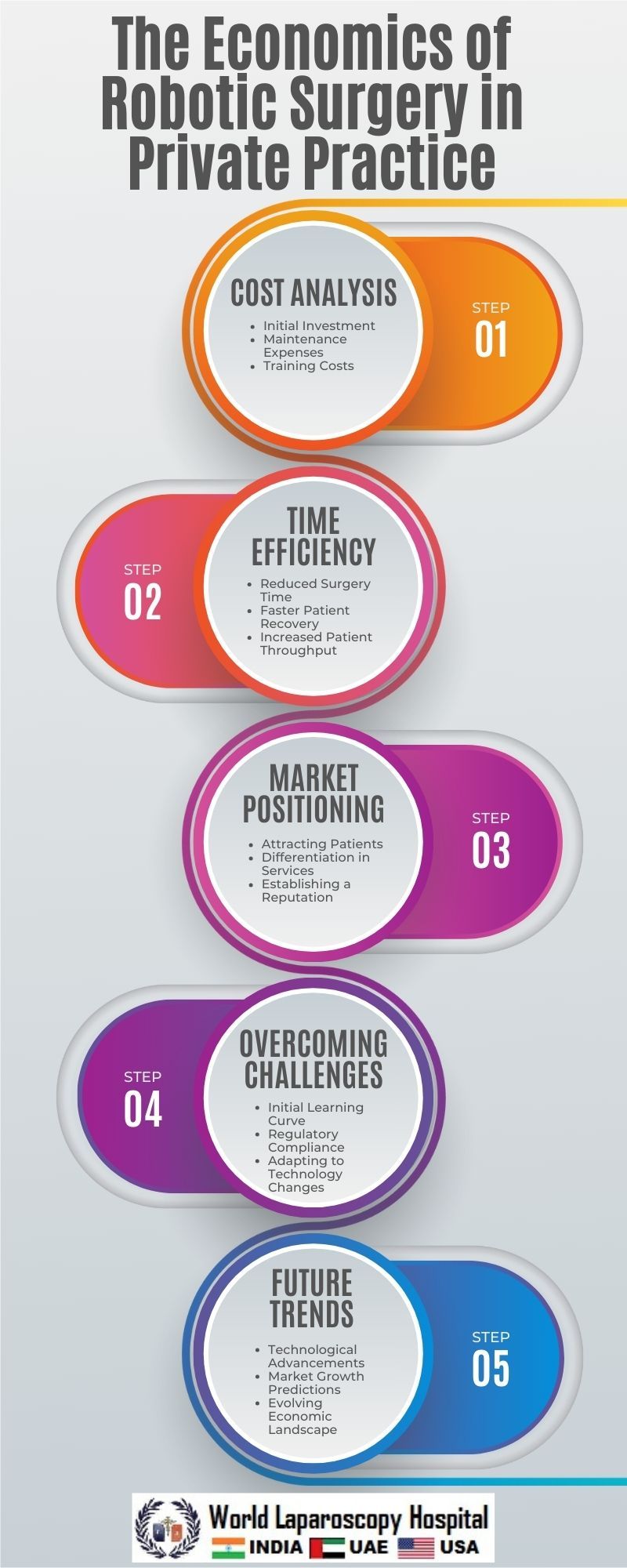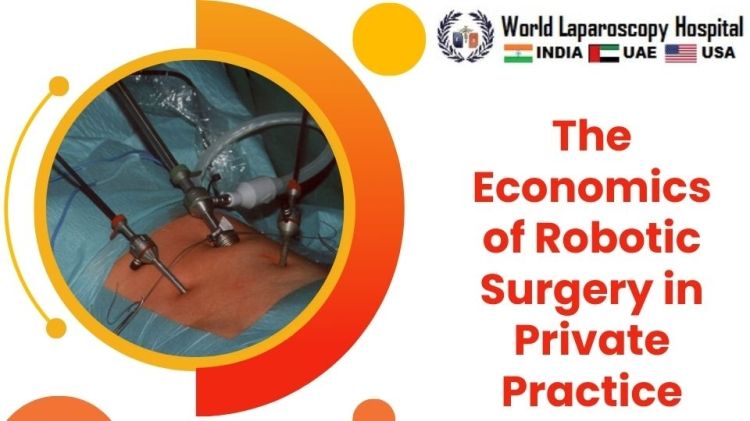The Economics of Robotic Surgery in Private Practice
Introduction:
The integration of robotic surgery into private practice has been a transformative force within the medical field, offering new dimensions of precision and efficiency. However, the economic implications of adopting this technology are complex, involving a delicate balance between upfront costs and long-term benefits. In this comprehensive exploration, we delve into the multifaceted economics of robotic surgery in private practice, examining the initial investment, ongoing expenses, and the potential financial rewards.

The Initial Investment:
Capital Expenditure:
- The robotic surgical system represents a substantial upfront investment, with costs ranging from hundreds of thousands to over a million dollars.
- Private practitioners must carefully assess the scalability of their practice and patient volume to justify this initial capital expenditure.
Infrastructure and Training Costs:
- Renovating operating rooms to accommodate robotic systems adds to the initial investment.
- Training surgeons and support staff to operate and maintain the robotic system is crucial but entails additional expenses.
Operational Costs:
Maintenance and Upgrades:
- Regular maintenance and software updates are essential to ensure the system's optimal performance.
- Budgeting for these ongoing expenses is crucial to prevent disruptions in surgical workflows.
Consumables and Instrumentation:
- Disposable instruments and accessories specific to robotic surgery contribute to the overall cost of each procedure.
- Private practices need to factor in the ongoing expenses related to the regular replenishment of these consumables.
Efficiency Gains and Cost Reductions:
Improved Patient Outcomes:
- Robotic surgery often results in quicker recovery times and reduced hospital stays, contributing to overall cost savings.
- Enhanced precision and minimally invasive procedures can lead to decreased postoperative complications.
Increased Patient Throughput:
- The efficiency of robotic systems allows surgeons to perform a higher number of procedures in a given time frame.
- Practices can leverage this increased throughput to offset initial investments and generate revenue.
IV. Reimbursement and Financial Returns:
Insurance Coverage and Reimbursement:
- Understanding the reimbursement landscape is crucial, as not all procedures performed with robotic assistance are uniformly reimbursed.
- Negotiating favorable reimbursement rates with insurance providers is essential for sustaining profitability.
Patient Attraction and Retention:
- Offering robotic surgery can be a competitive advantage, attracting patients seeking cutting-edge treatment options.
- Building a reputation for advanced, high-tech procedures can contribute to patient loyalty and referrals.
Case Studies and Success Stories:
Real-World Examples:
- Examining private practices that have successfully integrated robotic surgery, showcasing their economic journey.
- Highlighting the strategies employed by these practices to mitigate challenges and maximize financial returns.
Challenges and Considerations:
Regulatory Compliance:
- Ensuring adherence to regulatory guidelines and ethical considerations in adopting robotic technology.
- Navigating the evolving landscape of healthcare regulations related to robotic surgery.
Technological Obsolescence:
- The rapid pace of technological advancements may render current systems obsolete over time.
- Practices must devise strategies to manage potential obsolescence and plan for future upgrades.
Conclusion:
In conclusion, the economics of robotic surgery in private practice is a dynamic and evolving landscape. While the initial investment may seem daunting, the potential for long-term financial viability is substantial. Private practitioners must carefully assess their unique circumstances, considering patient demographics, surgical volumes, and reimbursement structures. The path to success involves a strategic approach, continuous evaluation, and a commitment to delivering high-quality patient care while navigating the intricate economic nuances of robotic surgery in private practice.






